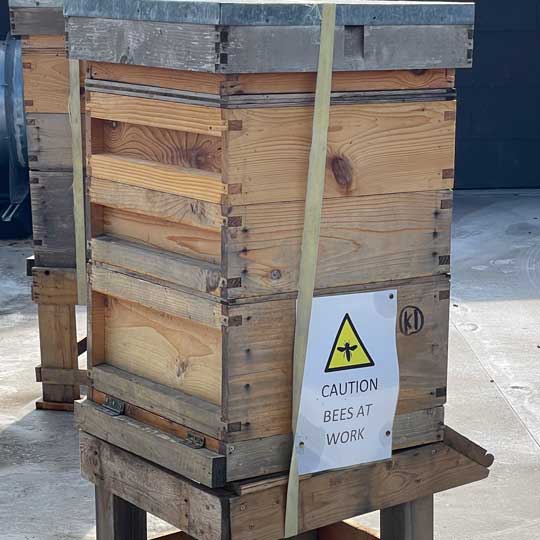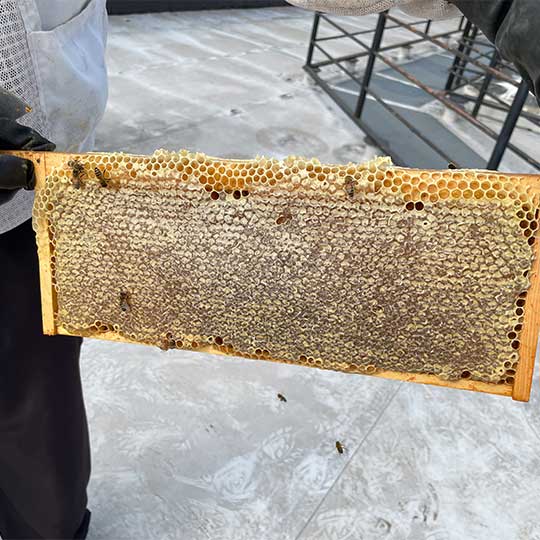We're buzzing with excitement. Meet our Bees!

In case you missed the buzzzz.
We are thrilled to announce 30,000 (now 100,000) new workers ready to earn their stripes as the latest additions to the Kyocera UK team.
They may bee up on the roof, but our two new Honeybee hives are creating a real buzz at our Reading office.
Number of hives
Initial number of bees
Number of bees at peak in June
Briony May Bakes Honey Flapjack Recipe
Ingredients
- 225g unsalted butter
- 225g light soft brown sugar
- 170g honey
- 450g rolled oats
Honeycomb
- 130g golden caster sugar
- 75g honey
- Pinch of salt
- 1/2 tsp bicarbonate of soda
To finish
- 50g dark chocolate, melted
Oven on to 180°C fan.
Grease and line a 30cm brownie tin.
Make the honeycomb by heating the sugar, honey and salt in a pan until the mixture is bubbling and reaches 145°C (use a jam thermometer).
Remove from the heat and stir through the bicarbonate, the mixture will bubble. Pour the honeycomb onto a sheet of parchment and leave to set for 5 minutes until hardened then bash into small pieces.
Heat the butter, sugar and honey together in a pan until melted then mix through the oats.
Stir through the broken up honeycomb then pour into the prepared tin. Bake for 25-30 minutes. Drizzle over the melted chocolate then leave to cool.
Follow Briony on Instagram @brinoymaybakes
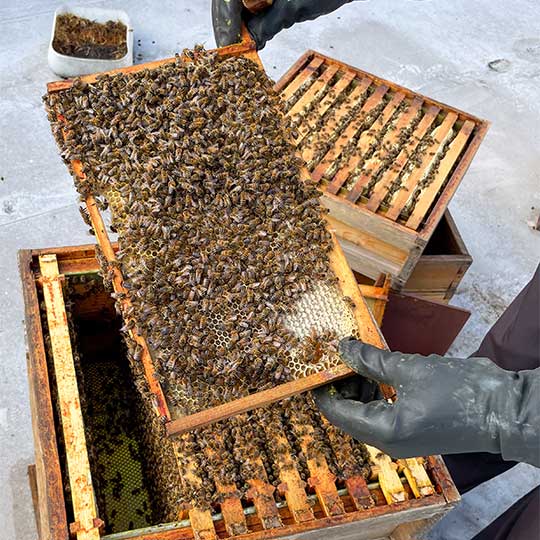
Healthy hives
Our office rooftop is an ideal, safe place for our pollinators to call home as the environment fulfils the three main requirements that they need:
- An absence of pesticides
- An abundance of water and floral resources
- Flight lines that are away from humans
Within our area of Reading there is a huge and varies amount of forage available, from parks and gardens to waste ground and railway cuttings. All of which is free from pesticides, unlike rural areas, which ensures that our bees remain healthy.
There is consensus amongst bee aficionados regarding the location of beehives on a roof, the hive should be in a dry sunny position and face a southerly direction in the Northern hemisphere and a northerly direction in the Southern hemisphere. The idea is that the bees will get the maximum amount of sunlight at the earliest possible time in the morning.
Harvesting honey
Many factors play a part in how productive a beehive will be. The strength of the colony – are there enough foraging bees? What forage is available – does it vary or is it just one type of flower or a floral desert like a field of wheat? Weather – is it conducive to flight? What is the humidity like?
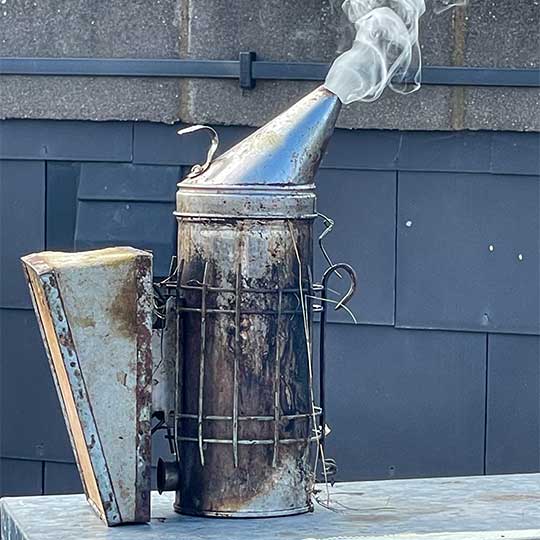
Generally, a hive will produce around 18 to 22Kg’s, however this can drop to 0 or be as high as 45Kg’s.
Here in the U.K. there are two main nectar flows plus the heather nectar flow. The first flow is between mid-April to the end of May, with a second flow from mid-June to the first week of August. The heather flow is normally between August and September.

The 'Bee Sting'
Noel Gillett (Modern Workplace Manager – Harrods), put Kyocera Bee Kind honey to good use and was inspired to create The Bee Sting
Ingredients for 1 serving
- 1 part tequila
- 1 part lemon juice
- 1 part honey syrup
To make the honey syrup, gently heat 2 parts Kyocera Bee Kind honey with 1 part water for a few minutes then allow to cool. Mix the ingredients together and shake with ice for 15 seconds.
Et Voila – Bee Sting!
Steve the Bee
Steve, our local beekeeper, has bred and supplied them from a stock of UK honeybees. He will pop in regularly throughout the year to check on them and make sure they stay healthy and bumble along nicely. He will also make sure the colonies don’t get too big and start swarming i.e. leave the hive as a big group.
Steve up on the roof with our CEO Rod Barthet (on left).
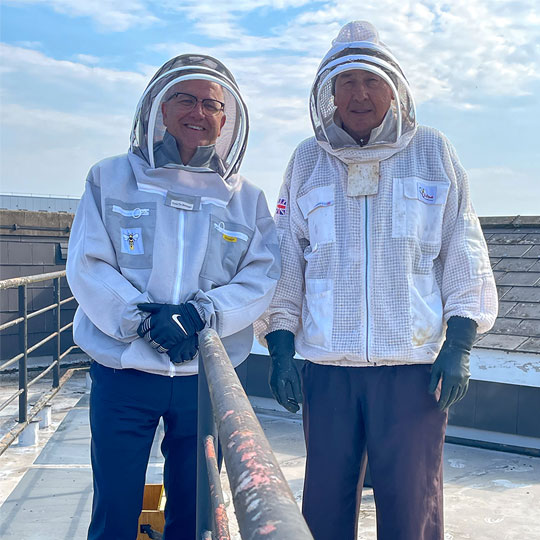
UN SDGs
Keeping beehives helps businesses towards fulfilling their CSR and ESG goals and allows them to support a number of the United Nations Sustainable Development Goals (SDGs).
In total, bees can support 10 of the 17 SDGs, from Life on Land to Good Health and Wellbeing, Sustainable Cities and Communities to Climate Actions.
Urban bees
Humans have been working with Honeybees for over 9000 years, however many people find the idea of keeping bees in cities strange and worry about the dangers of large groups of bees near humans. There is a perception that bees are aggressive and dangerous to people.
People need not fear honeybees as they have been bred for safety. With urban beehives usually placed where there is minimal human contact, the only places where an encounter could happen is when honeybees are pollinating flowers in window boxes, trees and gardens.
Urban beekeeping isn’t just good for the environment, it’s essential to the future of green cities. Urban beekeeping helps people connect with their environment, promotes pollination of flora, supports urban agriculture, and provides data to scientists and planners designing sustainable solutions.
Rooftop beehives are a great way to bring biodiversity to a building. Scientific studies have revealed that bees thrive in urban areas, more so than in suburban or rural locations. In light of this, corporate urban rooftops have huge potential to be crucial sites of pollinator support.
